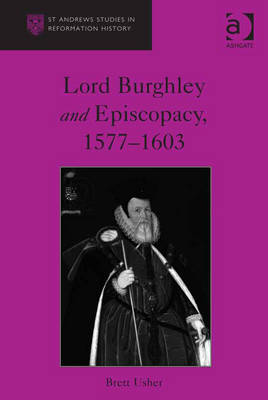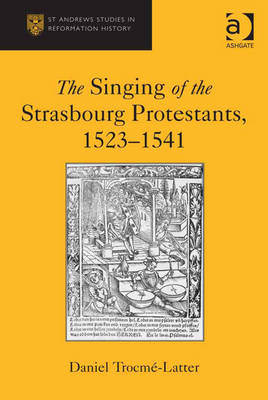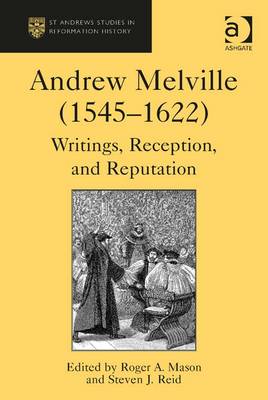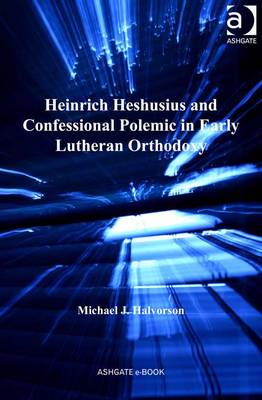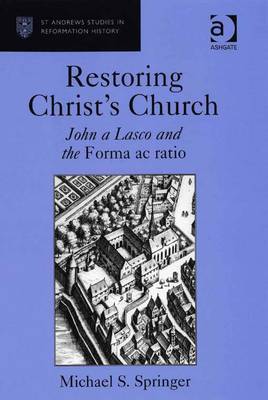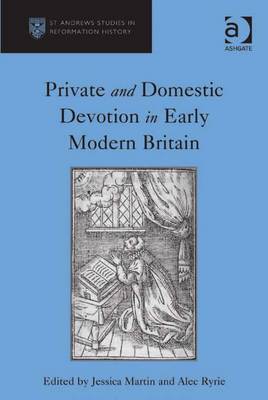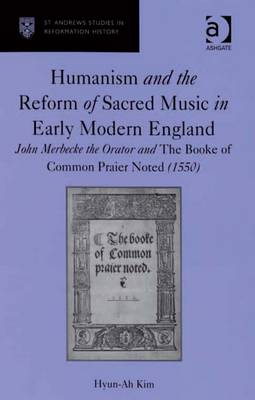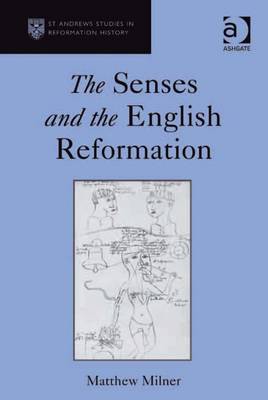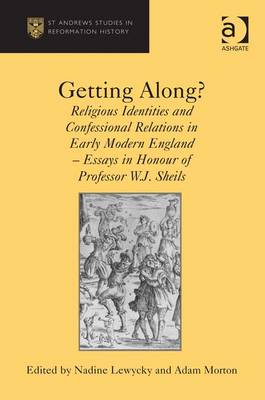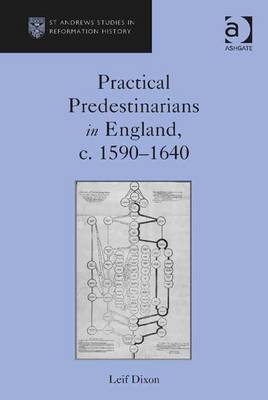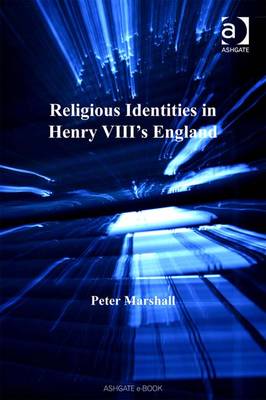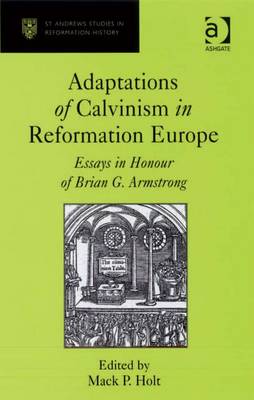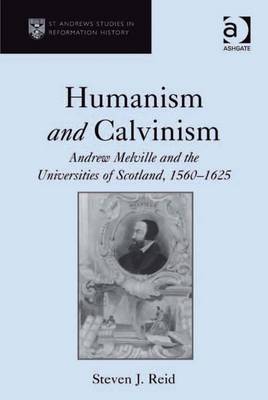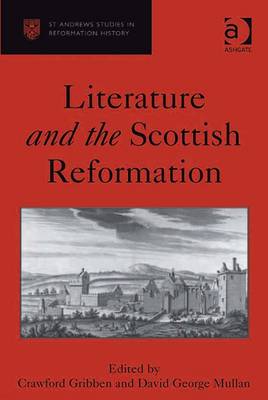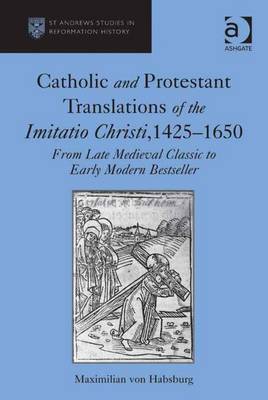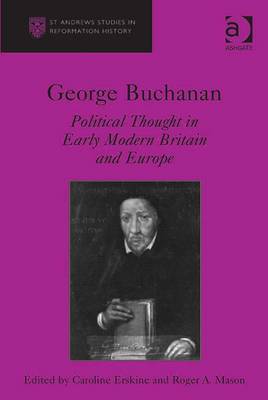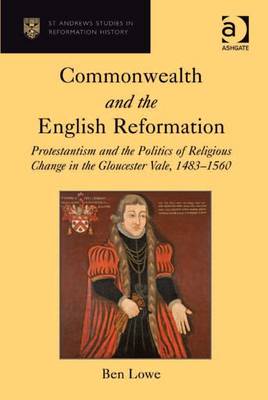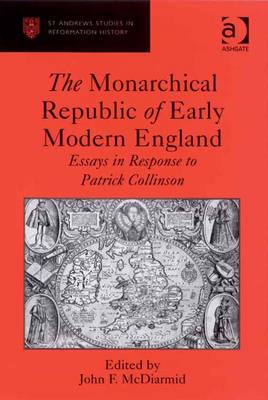St Andrews Studies in Reformation History
31 total works
Lord Burghley and Episcopacy, 1577-1603
Lord Burghley and Episcopacy, 1577-1603 examines the selection and promotion of bishops within the shifting sands of ecclesiastical politics at the Elizabethan court, drawing on the copious correspondence of leading politicians and clerical candidates as well as the Exchequer records of the financial arrangements accompanying each appointment. Beginning in 1577, the book picks up the narrative where Brett Usher's previous book (William Cecil and Episcopacy, 1559-1577) left off, following the fall of Archbishop Grindal, which brought the Elizabethan church to the brink of disaster. The book begins with an outline of the period under review, challenging the traditional view of corruption and decline. Instead Usher provides a more complex picture, emphasizing the importance of court rivalries over patronage and place, and a broadly more benign attitude from the Exchequer, which distinguishes the period from the first half of the reign. Within this milieu the book situates the dominance of the Cecils - father and son - in ecclesiastical affairs as the key continuity between the two halves of Elizabeth's reign.
Providing a fresh analysis of the Burghley's long and influential role within Elizabethan government, Usher both illuminates court politics and the workings of the Exchequer, as well as the practical operation of Elizabeth's supremacy. Specifically he demonstrates how Elizabeth learnt a valuable lesson from the debacle over the fall of Grindal, and from the late 1570s, rather than taking the lead, customarily she looked to her councillors and courtiers to come to some accommodation with each other before she would authorize appointments and promotions.
Note: Brett Usher died in 2013 before the publication of this book. Final editing of the typescript was undertaken by Professor Kenneth Fincham of the University of Kent, who also guided the book through the publication process.
The Singing of the Strasbourg Protestants, 1523-1541
by Dr Daniel Trocme-Latter
Music was, in some form or another, a pastime enjoyed by all in sixteenth-century society, and a fundamental part of their lives. It was both through the use of music and partly as a result of its existence that many religious changes occurred during the Reformation. This book explores the part played by music, especially group singing, in the unfolding of the Protestant reforms in Strasbourg. It considers both ecclesiastical and `popular' songs in the city, examining how both genres fitted into people's lives during this time of strife, and how the provision and dissemination of music as a whole affected, and in turn was affected by, the new ecclesiastical arrangement.
Whilst it would be naive to assume that the congregations were transformed from impious to pious overnight as the result of the introduction of German hymns, it is clear that there were real and concerted efforts on the part of reformers to get people to embrace the new faith, and writing hymns for them to sing was central to the process. Drawing upon a range of sources - including liturgical orders and hymnals, polemical songs, chronicles of the Reformation and text manuscripts - the book explores the methods by which new songs were introduced in Strasbourg churches, and suggests how congregations might have learnt them. In so doing it provides an account of the process by which reformers found music a place in the new Church, and used it to promote their wider reform agenda.
Andrew Melville (1545-1622)
Andrew Melville is chiefly remembered today as a defiant leader of radical Protestantism in Scotland, John Knox's heir and successor, the architect of a distinctive Scottish Presbyterian kirk and a visionary reformer of the Scottish university system. While this view of Melville's contribution to the shaping of Protestant Scotland has been criticised and revised in recent scholarship, his broader contribution to the development of the neo-Latin culture of early modern Britain has never been given the attention it deserves. Yet, as this collection shows, Melville was much more than simply a religious reformer: he was an influential member of a pan-European humanist network that valued classical learning as much as Calvinist theology.
Neglect of this critical aspect of Melville's intellectual outlook stems from the fact that almost all his surviving writings are in Latin - and much of it in verse. Melville did not pen any substantial prose treatise on theology, ecclesiology or political theory. His poetry, however, reveals his views on all these topics and offers new insights into his life and times. The main concerns of this volume, therefore, are to provide the first comprehensive listing of the range of poetry and prose attributed to Melville and to begin the process of elucidating these texts and the contexts in which they were written. While the volume contributes to an on-going process that has seen Melville's role as an ecclesiastical politician and educational reformer challenged and diminished, it also seeks to redress the balance by opening up other dimensions of Melville's career and intellectual life and shedding new light on the broader cultural context of Jacobean Scotland and Britain.
Heinrich Heshusius and Confessional Polemic in Early Lutheran Orthodoxy
Heinrich Heshusius (1556-97) became a leading church superintendent and polemicist during the early age of Lutheran orthodoxy, and played a major role in the reform and administration of several German cities during the late Reformation. As well as offering an introduction to Heshusius's writings and ideas, this volume explores the wider world of late-sixteenth-century German Lutheranism in which he lived and worked. In particular, it looks at the important but inadequately understood network of Lutheran clergymen in North Germany centred around universities such as Rostock, Jena, Koenigsberg, and Helmstedt, and territories such as Braunschweig-Wolfenbuttel, in the years after the promulgation of the Formula of Concord (1577).
In 1579, Heshusius followed his father Tilemann to the newly founded University of Helmstedt, where Heinrich served as a professor on the philosophy faculty and established lasting connections within the Gnesio-Lutheran party. In the 1590s, Heshusius completed his doctoral degree in theology and worked as a pastor and superintendent in Tonna and Hildesheim, publishing over seventy sermons as well as a popular catechism based on the Psalms and Luther's Small Catechism. As confessional tensions mounted in Hildesheim, Heshusius worked as a polemicist for the Lutheran cause, pressing for the conversion or expulsion of local Jews. At the same time, Heshusius began to argue aggressively for the expulsion of Jesuits, who had been increasing in number due to the activities of the local bishop and administrator, Ernst II of Bavaria. By discussing the connection between these two expulsion efforts, and the practical activities Heshusius undertook as a preacher, catechist, and administrator, this study portrays Heshusius as a zealous protector of Lutheran traditions in the face of confessional rivals. Understanding this zeal, and the policies, piety, and propaganda that came as a result, is an important factor in relating how Lutheran orthodoxy gained momentum within Germany in the last decades of the sixteenth century.
In all this book will reveal the complex characteristics of an important (but virtually unknown) Lutheran superintendent and theologian active during the era of confessionalization, providing a useful resource for the ongoing efforts of scholars hoping to understand the nature of orthodoxy and its importance for early modern Europeans.f
Restoring Christ's Church
This book examines the struggle for Protestant consensus and unity through the work of John a Lasco (1499-1560). It is only in recent years that scholars have begun to recognize the importance of Lasco as one of the leading figures of the European Reformation, and a pivotal figure between Lutheran and Reformed theologians. The Polish reformer was among the most dynamic church organizers of the sixteenth century, dedicated to healing the divisions among evangelicals and searching for the key to Protestant unity in the example of the Apostolic Church. It was to this end that he published the Forma ac ratio in 1555, a work that recorded the rites and practices of the London Strangers' Church (of which he had been the first superintendent) and to provide a model for uniting the disparate Protestant communities on the Continent.
Although some recent works have focused on aspects of Lasco's early career in Germany and England, this is the first book to provide a comprehensive analysis of the Forma ac ratio, and the reformer's reasons for writing it. This study also puts Lasco's distinct model for Protestant churches into the wider European context and assesses his impact on the struggle for unity through an examination of his correspondence, the reaction to his writings, and his influence on Protestant congregations across Europe.
Private and Domestic Devotion in Early Modern Britain
Scholars increasingly recognise that understanding the history of religion means understanding worship and devotion as well as doctrines and polemics. Early modern Christianity consisted of its lived experience. This collection and its companion volume (Worship and the Parish Church in Early Modern Britain, ed. Natalie Mears and Alec Ryrie) bring together an interdisciplinary range of scholars to discuss what that lived experience comprised, and what it meant.
Private and domestic devotion - how early modern men and women practised their religion when they were not in church - is a vital and largely hidden subject. Here, historical, literary and theological scholars examine piety of conformist, non-conformist and Catholic early modern Christians, in a range of private and domestic settings, in both England and Scotland. The subjects under analysis include Bible-reading, the composition of prayers, the use of the psalms, the use of physical props for prayers, the pious interpretation of dreams, and the troubling question of what counted as religious solitude. The collection as a whole broadens and deepens our understanding of the patterns of early modern devotion, and of their meanings for early modern culture as a whole.
Humanism and the Reform of Sacred Music in Early Modern England
John Merbecke (c.1505-c.1585) is most famous as the composer of the first musical setting of the English liturgy, The Booke of Common Praier Noted (BCPN), published in 1550. Not only was Merbecke a pioneer in setting English prose to music but also the compiler of the first Concordance of the whole English Bible (1550) and of the first English encyclopaedia of biblical and theological studies, A Booke of Notes and Common Places (1581). By situating Merbecke and his work within a broader intellectual and religio-cultural context of Tudor England, this book challenges the existing studies of Merbecke based on the narrow theological approach to the Reformation. Furthermore, it suggests a re-thinking of the prevailing interpretative framework of Reformation musical history.
On the basis of the new contextual study of Merbecke, this book seeks to re-interpret his work, particularly BCPN, in the light of humanist rhetoric. It sees Merbecke as embodying the ideal of the 'Christian-musical orator', demonstrating that BCPN is an Anglican epitome of the Erasmian synthesis of eloquence, theology and music. The book thus depicts Merbecke as a humanist reformer, through re-evaluation of his contributions to the developments of vernacular music and literature in early modern England. As such it will be of interest, not only to church musicians, but also to historians of the Reformation and students of wider Tudor culture.
The Senses and the English Reformation
It is a commonly held belief that medieval Catholics were focussed on the 'bells and whistles' of religious practices, the smoke, images, sights and sounds that dazzled pre-modern churchgoers. Protestantism, in contrast, has been cast as Catholicism's austere, intellective and less sensual rival sibling. With iis white-washed walls, lack of incense (and often music) Protestantism worship emphasised preaching and scripture, making the new religion a drab and disengaged sensual experience. In order to challenge such entrenched assumptions, this book examines Tudor views on the senses to create a new lens through which to explore the English Reformation.
Divided into two sections, the book begins with an examination of pre-Reformation beliefs and practices, establishing intellectual views on the senses in fifteenth-century England, and situating them within their contemporary philosophical and cultural tensions. Having established the parameters for the role of sense before the Reformation, the second half of the book mirrors these concerns in the post-1520 world, looking at how, and to what degree, the relationship between religious practices and sensation changed as a result of the Reformation.
By taking this long-term, binary approach, the study is able to tackle fundamental questions regarding the role of the senses in late-medieval and early modern English Christianity. By looking at what English men and women thought about sight, hearing, smell, taste and touch, the stereotype that Protestantism was not sensual, and that Catholicism was overly sensualised is wholly undermined. Through this examination of how worship was transformed in its textual and liturgical forms, the book illustrates how English religion sought to reflect changing ideas surrounding the senses and their place in religious life. Worship had to be 'sensible', and following how reformers and their opponents built liturgy around experience of the sacred through the physical allows us to tease out the tensions and pressures which shaped religious reform.
Getting Along?
Examining the impact of the English and European Reformations on social interaction and community harmony, this volume simultaneously highlights the tension and degree of accommodation amongst ordinary people when faced with religious and social upheaval. Building on previous literature which has characterised the progress of the Reformation as 'slow' and 'piecemeal', this volume furthers our understanding of the process of negotiation at the most fundamental social and political levels - in the family, the household, and the parish.
The essays further research in the field of religious toleration and social interaction in the late sixteenth and early seventeenth centuries in both Britain and the wider European context. The contributors are amongst the leading researchers in the fields of religious toleration and denominational history, and their essays combine new archival research with current debates in the field. Additionally, the collection seeks to celebrate the career of Professor Bill Sheils, Head of the Department of History at the University of York, for his on-going contributions to historians' understanding of non-conformity (both Catholic and Protestant) in Reformation and post-Reformation England.
The belief that God eternally and unalterably decrees the election of one part of humankind and the reprobation of the rest has not aged well, but in the sixteenth and seventeenth centuries the doctrine of predestination was publicised and popularised to an extent unparalleled in the history of Christianity. Why was this? How successfully was the doctrine able to mix with other ideas, and to what effect? And did belief in predestination encourage confidence or despair? Practical Predestinarians is a study of the ways in which the doctrine of predestination was understood and communicated by churchmen in late Tudor and early Stuart England. It connects with debates about the 'popularity' of Protestantism during England's 'long reformation', as well as with the question of whether predestination tended toward inclusive or divisive, and conformist or subversive, applications. Intersecting with recent debates about the popular reception of Protestant preaching, this book focusses upon the pastoral message itself - it is therefore an investigation into the public face of English Calvinism.
Narratives of the Religious Self in Early-Modern Scotland
Drawing on a rich, yet untapped, source of Scottish autobiographical writing, this book provides a fascinating insight into the nature and extent of early-modern religious narratives. Over 80 such personal documents, including diaries and autobiographies, manuscript and published, clerical and lay, feminine and masculine, are examined and placed both within the context of seventeenth-century Scotland, and also early-modern narratives produced elsewhere.
In addition to the focus on narrative, the study also revolves around the notion of conversion, which, while a concept known in many times and places, is not universal in its meaning, but must be understood within the peculiarities of a specific context and the needs of writers located in a specific tradition, here, Puritanism and evangelical Presbyterianism. These conversions and the narratives which provide a means of articulation draw deeply from the Bible, including the Psalms and the Song of Solomon. The context must also include an appreciation of the political history, especially during the religious persecutions under Charles II and James VII, and later the changing and unstable conditions experienced after the arrival of William and Mary on her father's throne. Another crucial context in shaping these narratives was the form of religious discourse manifested in sermons and other works of divinity and the work seeks to investigate relations between ministers and their listeners.
Through careful analysis of these narratives, viewing them both as individual documents and as part of a wider genre, a fuller picture of seventeenth-century life can be drawn, especially in the context of the family and personal development. Thus the book may be of interest to students in a variety of areas of study, including literary, historical, and theological contexts. It provides for a greater understanding of the motivations behind such personal expressions of early-modern religious faith, whose echoes can still be heard today.
Religious Identities in Henry VIII's England
Henry VIII's decision to declare himself supreme head of the church in England, and thereby set himself in opposition to the authority of the papacy, had momentous consequences for the country and his subjects. At a stroke people were forced to reconsider assumptions about their identity and loyalties, in rapidly shifting political and theological circumstances. Whilst many studies have investigated Catholic and Protestant identities during the reigns of Elizabeth and Mary, much less is understood about the processes of religious identity-formation during Henry's reign.
In this volume Peter Marshall explores a wide range of evidence that underlines the complex web of overlapping and competing identities that people were forced to assume as a religiously conservative king sought to take control of his national church. Investigating broad issues of conversion, polemic and propaganda, scripture, exile, forgery and miracles, as well as looking at specific cases of individuals and events, a rich picture is built up of the ambiguities and paradoxes of the early reformation process in England.
Consisting of three entirely new chapters, and eight previously published but updated essays, this volume provides a fascinating insight into the complex religious developments of early sixteenth-century England. As Tudor religious history enters a 'post-revisionist' phase that acknowledges the strength and vitality of traditional religious culture, whilst reasserting the broad appeal of the evangelical message, this volume provides a timely reassessment and critique of the subject.
Traditional historiography has always viewed Calvin's Geneva as the benchmark against which all other Reformed communities must inevitably be measured, judging those communities who did not follow Geneva's institutional and doctrinal example as somehow inferior and incomplete versions of the original. Adaptations of Calvinism in Reformation Europe builds upon recent scholarship that challenges this concept of the 'fragmentation' of Calvinism, and instead offers a more positive view of Reformed communities beyond Geneva.
The essays in this volume highlight the different paths that Calvinism followed as it took root in Western Europe and which allowed it to develop within fifty years into the dominant Protestant confession. Each chapter reinforces the notion that whilst many reformers did try to duplicate the kind of community that Calvin had established, most had to compromise by adapting to the particular political and cultural landscapes in which they lived. The result was a situation in which Reformed churches across Europe differed markedly from Calvin's Geneva in explicit ways. Summarizing recent research in the field through selected French, German, English and Scottish case studies, this collection adds to the emerging picture of a flexible Calvinism that could adapt to meet specific local conditions and needs in order to allow the Reformed tradition to thrive and prosper.
The volume is dedicated to Brian G. Armstrong, whose own scholarship demonstrated how far Calvinism in seventeenth-century France had become divided by significant disagreements over how Calvin's original ideas and doctrines were to be understood.
Life Writing in Reformation Europe
The Reformation period witnessed an explosion in the number of biographies of contemporary religious figures being published. Whether lives of reformers worthy of emulation, or heretics deserving condemnation, the genre of biography became a key element in the confessional rivalries that raged across Europe in the sixteenth and seventeenth centuries. Offering more than a general survey of Life writing, this volume examines key issues and questions about how this trend developed among different confessions and how it helped shape lasting images of reformers, particularly Luther and Calvin up to the modern period.
This is the first-ever full length study of the subject showing that Lives of the reformers constitute an integral part of the intellectual and cultural history of the period, serving as an important source of information about the different Reformations. Depending on their origin, they provide a lesson in theology but also in civic values and ideals of education of the period. Genevan Lives in particular also point up the delicate issue of 'Reformed hagiography' which their authors try to avoid with a varying degree of success. Having consistently been at the forefront of the study of the intellectual history of the Reformation Irena Backus is perfectly placed to highlight the importance of Life writing. This is a path-breaking study that will open up a new way of viewing the confessional conflicts of the period and their historiography.
Humanism and Calvinism
Across early-modern Europe the confessional struggles of the Reformation touched virtually every aspect of civic life; and nowhere was this more apparent than in the universities, the seedbed of political and ecclesiastical society. Focussing on events in Scotland, this book reveals how established universities found themselves at the centre of a struggle by competing forces trying to promote their own political, religious or educational beliefs, and under competition from new institutions. It surveys the transformation of Scotland's medieval and Catholic university system into a greatly-expanded Protestant one in the decades following the Scottish Reformation of 1560. Simultaneously the study assesses the contribution of the continentally-educated religious reformer Andrew Melville to this process in the context of broader European social and cultural developments - including growing lay interest in education (as a result of renaissance humanism), and the involvement of royal and civic government as well as the new Protestant Kirk in university expansion and reform.
Through systematic use of largely neglected manuscript sources, the book offers fresh perspectives on both Andrew Melville and the development of Scottish higher education post-1560. As well as providing a detailed picture of events in Scotland, it contributes to our growing understanding of the role played by higher education in shaping society across Europe.
Literature and the Scottish Reformation
Throughout the twentieth century Scottish literary studies was dominated by a critical consensus that critiqued contemporary anti-Catholic by advancing a re-reading of the Reformation. This consensus understood that Scotland's rich medieval culture had been replaced with an anti-aesthetic tyranny of life and letters. As a result, Scottish literature has consistently been defined in opposition to the Calvinism to which it frequently returns. Yet, as the essays in this collection show, such a consensus appears increasingly untenable in light both of recent research and a more detailed survey of Scottish literature.
This collection launches a full-scale reconsideration of the series of relationships between literature and reformation in early modern Scotland. Previous scholarship in this area has tended to dismiss the literary value of the writing of the period - largely as a reaction to its regular theological interests. Instead the essays in this volume reinforce recent work that challenges the received scholarly consensus by taking these interests seriously. This volume argues for the importance of this religiously orientated writing, through the adoption of a series of interdisciplinary approaches. Arranged chronologically, the collection concentrates on major authors and texts while engaging with a number of contemporary critical issues and so highlighting, for example, writing by women in the period. It addresses the concerns of historians and theologians who have routinely accepted the established reading of this period of literary history in Scotland and offers a radically new interpretation of the complex relationships between literature and religious reform in early modern Scotland.
Catholic and Protestant Translations of the Imitatio Christi, 1425-1650
The Imitatio Christi is considered one of the classic texts of Western spirituality. There were 800 manuscript copies and more than 740 different printed editions of the Imitatio between its composition in the fifteenth century and 1650. During the Reformation period, the book retained its popularity with both Protestants and Catholics; with the exception of the Bible it was the most frequently printed book of the sixteenth century.
In this pioneering study, the remarkable longevity of the Imitatio across geographical, chronological, linguistic and confessional boundaries is explored. Rather than attributing this enduring popularity to any particular quality of universality, this study suggests that its key virtue was its appropriation by different interest groups. That such an apparently Catholic and monastic work could be adopted and adapted by both Protestant reformers and Catholic activists (including the Jesuits) poses intriguing questions about our understanding of Reformation and Counter Reformation theology and confessional politics.
This study focuses on the editions of the Imitatio printed in English, French, German and Latin between the 1470s and 1650. It offers an ambitious and comprehensive survey of the process of translation and its impact and contribution to religious culture. In so doing it offers a fresh analysis of spirituality and devotion within their proper late medieval and early modern contexts. It also demonstrates that spirituality was not a peripheral dimension of religion, but remains at the very heart of both Catholic and Protestant self-perception and identity.
George Buchanan
George Buchanan (1506-82) was the most distinguished Scottish humanist of the sixteenth century with an unparalleled contemporary reputation as a Latin poet, playwright, historian and political theorist. However, while his contemporary importance as the scourge of Mary Queen of Scots and advocate of popular rebellion has long been recognised, this volume represents the first attempt to explore the subsequent influence of his ideas and his contested reputation as a political ideologue and cultural icon.
Featuring a wide-ranging selection of essays by an international cast of established and younger scholars, the volume explores Buchanan's legacy as an historian and political theorist in Britain and Europe in the two centuries following his death, with particular emphasis on the reception of his remarkably radical views on popular sovereignty and political assassination. Divided into four parts, the volume covers the immediate impact and reception of his writings in sixteenth- and early seventeenth-century Britain; the wider Northern European context in which his thought was influential; the engagement with his political ideas in the course of the seventeenth-century British constitutional struggles; and the influence of his ideas as well as the changing nature of his reputation through the eighteenth century and beyond.
The introduction to the volume not only reviews the material in the body of the collection, but also reflects on the use and abuse of Buchanan's ideas in the early modern period and the methodological issues of influence and reputation raised by the contributors. Such a reassessment of Buchanan and his legacy is long overdue and this volume will be welcomed by all scholars with an interest in the political and cultural history of early modern Britain and Europe.
Whilst much recent research has dealt with the popular response to the religious change ushered in during the mid-Tudor period, this book focuses not just on the response to broad liturgical and doctrinal change, but also looks at how theological and reform messages could be utilized among local leaders and civic elites. It is this cohort that has often been neglected in previous efforts to ascertain the often elusive position of the common woman or man.
Using the Vale of Gloucester as a case study, the book refocuses attention onto the concept of "commonwealth" and links it to a gradual, but long-standing dissatisfaction with local religious houses. It shows how monasteries, endowed initially out of the charitable impulses of elites, increasingly came to depend on lay stewards to remain viable. During the economic downturn of the mid-Tudor period, when urban and landed elites refocused their attention on restoring the commonwealth which they believed had broken down, they increasingly viewed the charity offered by religious houses as insufficient to meet the local needs. In such a climate the Protestant social gospel seemed to provide a valid alternative to which many people gravitated.
Holding to scrutiny the "revisionist revolution" of the past twenty years, the book reopens debate and challenges conventional thinking about the ways the traditional church lost influence in the late middle ages, positing the idea that the problems with the religious houses were not just the creation of the reformers but had rather a long history. In so doing it offers a more complete picture of reform that goes beyond head-counting by looking at the political relationships and how they were affected by religious ideas to bring about change.
The Monarchical Republic of Early Modern England
With its challenging, paradoxical thesis that Elizabethan England was a 'republic which happened also to be a monarchy', Patrick Collinson's 1987 essay 'The Monarchical Republic of Queen Elizabeth I' instigated a proliferation of research and lively debate about quasi-republican aspects of Tudor and Stuart England.
In this volume, a distinguished international group of scholars examines the idea of the 'monarchical republic' from the 1530s to the 1640s, and tests the concept from a variety of points of view. New suggestions are advanced about the pattern of development of quasi-republican tendencies and of opposition to them, and about their relation to the politics of earlier and later periods.
A number of essays focus on the political activity of leading figures at court; several analyse political life in towns or rural areas; others discuss education, rhetoric, linguistic thought and reading practices, poetic and dramatic texts, the relations of politics to religious conflict, gendered conceptions of the monarchy, and 'monarchical republicanism' in the new American colonies. Differing positions in the scholarly debate about early modern English republicanism are represented, and fresh archival research advances the study of quasi-republican elements in early modern English politics.
